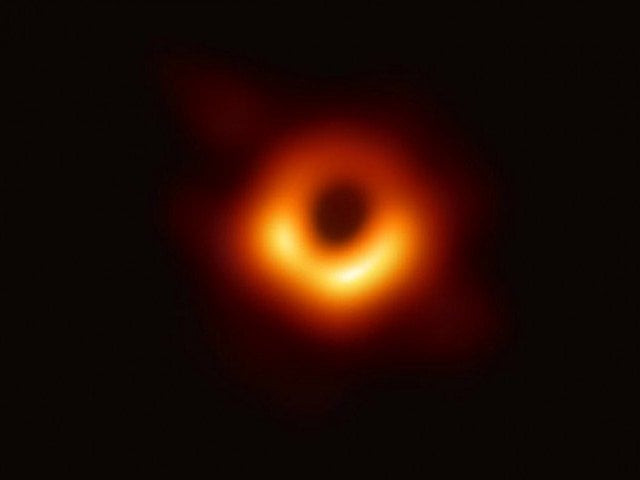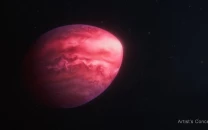The black hole that opens up a whole new universe
The visual evidence of a black hole stands to revolutionise astrophysics research

The first photograph of a black hole and its fiery halo, released Wednesday by Event Horizon. PHOTO: NSF
The image, produced by the Event Horizon Telescope (EHT) project, shows the shadow of a supermassive black hole at the centre of the Messier 87 galaxy, roughly 53 million light-years away from us here on Earth. The shadow is surrounded by an asymmetric emission ring, visible as a yellow-orange glow in the image, believed to be the black hole’s event horizon – a region in spacetime that would, in layman’s terms, be the ‘point of no return’ should something venture close enough to the cosmic entity.
But what does all of this mean for the casual observer? Like the black hole’s proposed name Pōwehi – which means ‘embellished dark source of unending creation’ in the Hawaiian language – for someone who is not a student of astrophysics, the significance of the development remains shrouded in darkness.
Black hole image gives Twitter a field day
“Basically, the observational results obtained by the EHT or the image of the black hole, if you will, has proved Albert Einstein’s theory of relativity,” said Dr Shahid Qureshi, the former director of the Karachi University Institute of Space and Planetary Astrophysics (ISPA).
“The ideas pertaining to black holes presented by Einstein are concordant with the EHT’s observational results. This means that while there may be additions and modifications to Einstein’s theory of relativity, it is unlikely that any of his ideas will be excised from the framework,” he told The Express Tribune.
According to Dr Qureshi, while the development may not result in any tangible technological advancement that impact people’s day to day lives, it would increase our understanding of the universe exponentially.
“New theoretical and research models will be established based on the empirical model that scientists will now put forward based on the EHT results,” he said.
Current ISPA Director Dr Javed Iqbal agreed; “The visual evidence of a black hole published recently has the potential to shift astrophysics research from the theoretical realm to the empirical realm,” he said. “Research conducted under this empirical framework may then prompt changes in astrophysics theories and models currently agreed upon,” he added.
Que sera sera
Talking about how visual evidence of the black hole was obtained, Dr Qureshi explained that the EHT is actually an array of several observatories and telescope facilities. “The point in space that the black hole was believed to be located in was monitored by these facilities, in seven or eight locations, and observations were synchronized using an atomic clock,” he said. “The results from these various facilities were processed by three different supercomputers to produce the ‘image’ of a black hole,” he added.
According to Dr Qureshi, the milestone achievement has stoked more curiosity among scientists and science students regarding cosmic phenomenon. This, he believed, is significant by itself as it could propel advancements in physics further.
“Even our students, here in Pakistan, are now asking more and more questions about the universe following this development,” he said. “We need to capitalise on this and as a nation, really think about how we can contribute to scientific research worldwide.
"What we need now is far-sighted vision. We have to teach this and other branches of science better from elementary to high school levels. We also need to plan how to overcome the lack of technological resources from scientific research,” he added.



















COMMENTS
Comments are moderated and generally will be posted if they are on-topic and not abusive.
For more information, please see our Comments FAQ